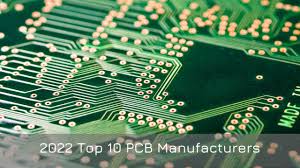Standard Circuit Not quite made for flexible applications, but they follow the same printed circuit board construction steps to create working boards. Flexible PCBs, unlike rigid PCBs, are made to fold away and change state, bringing forth an all-new set of design opportunities and enabling inventive and effective application in numerous sectors. How Flexible Printed Circuits Are Helping In The Modern Electronics
Enhanced Design Options
These flexible PCBs can accommodate more imaginative and smaller designs of the products. The traditional rigid PCBs force designers into a corner: their fixed nature combined with their bulk means they have to be restricted in placement. On the other hand, Flexible PCBs can bend & fold and can easily mount in small spaces, which makes them perfect for present-day wearable's, Smart Phones and Medical Devices. For example, the most recent generation of wearables use flexible PCBs to allow electronics to be wrapped around a wrist or fold into the confined, complex spaces of a smartphone.
In essence, this enhanced toughness and durability and saved this equipment from needing replacement with use.
The built in capability of flexing of these boards will increase their longevity by a significant factor. This means that while traditional PCBs can crack or break when subjected to stress, a flexible PCB can be bent or twisted without causing any damage at all. The ability to withstand harsh environments has a myriad of critical applications, especially in military and aerospace electronics, where reliability trumps all other concerns. Testing by a third-party shows the flexible PCB can survive 200,000 flex cycles without breaking.
Reduced Weight and Space
The flexible PCBs are thin and light in weight which ultimately minimizes the device dimensions. Their weight is much lower than that of hard PCBs, sometimes even lighter up to 70% of the electronic elements. In industries such as aerospace, where there are direct cost-saving reduction at each ounce removed, this reduction is important.

Cheap Manufacturing
While flexible PCBs tend to have higher upfront costs, they can be more economical in the long term because of their integration options. Rigid board and other connectors Rigid board and other connectors can be replaced, reducing bulk and cost of single silicon chips that would be individually integrated with complex wiring solutions. Additionally, the assembly is expedited as well, enabling less labor which might result in connection issues.
Application Across Industries
Flexible PCBs are highly versatile, allowing them to be used in a wide variety of applications. For consumer electronics, they are mandatory in compact devices as cameras and personal entertainment systems. Flexible PCBs are typically found in dashboard displays, sensor systems, etc. in the automotive industry. Medical devices are another major area of opportunity where flexible PCBs find immediate application in implants and wearable health monitors due to their unique requirements for flexibility and biocompatibility.
Flexible PCBs Towards The Future as Electronics
With electronic devices shrinking in size at an unprecedented rate while also requiring higher reliability and durability, it is only expected that flexible PCB will continue to burgeon in importance. The fact that they seamlessly fit in almost every design while providing durability and superior performance capability makes them a game changer in the way electronics are constructed, the team says.
Flexible PCBs have had a significant impact on the electronics industry, allowing designers to push boundaries of what designs can achieve on a scale we once only dreamed of before. The role of flexible PCBs is only expected to grow as technology continues to advance, and its future impact on electronics design and manufacturing is certain to drive new innovations.